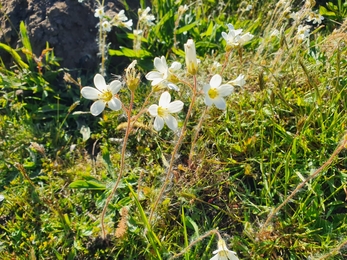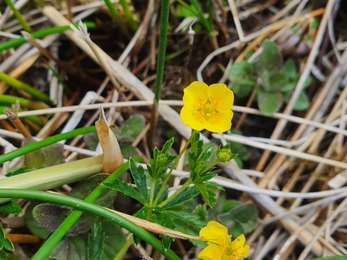Last year Carlton Marshes was one of the top spots in the UK to see dragon and damselflies, recording a staggering 28 resident and migratory species. Here is a selection of species spotted on-the-wing this week at Carlton Marshes: scarce chaser male, variable damselfly male mating and holding a female, newly emerged and still colourless common blue, norfolk hawker, banded demoiselle female, banded demoiselle male and hairy dragonfly male and female mating.
Weekly wild news from our reserves, 28th May
Lound Lakes by Steve Aylward
A floral affair at Lackford Lakes
Lackford Lakes boasts an unusual mixture of freshwater lakes, wet carr woodland, fen meadow and dry Breck grassland, making it a great place to spot a variety of wildflowers and here are just a few that have been spotted this week.
Hound’s tongue is a plant of the borage family with reddish-purple flowers and grey-green hairy leaves. It is so named as the hairy leaves have been likened to a dog’s tongue. Hound’s tongue has been used historically as a diuretic, and by herbalists to cure coughs, sores, ulcers, and even baldness!
Another plant of the borage family, changing forget me not has tiny yellow or cream flowers which become larger and turn blue as they mature. It is a low slender plant with hairy leaves and stem.
Marsh valerian is a plant of wetlands and bogs and can be distinguished from common valerian by its stockier shape and paler pink flowers. Both common and marsh valerian have been used historically as a medicine for insomnia, and the name valerian comes from the Latin verb valere, meaning ‘to be healthy’.
A rare plant of meadows and grassland, meadow saxifrage can be recognised by its delicate white flowers, kidney shaped leaves and hairy stem.
Usually found on acid-grassland or heathland, tormentil has yellow, buttercup-like flowers, but with only four petals (buttercups have five). The flowers provide nectar for solitary bees. Historically tormentil was used to treat colic, gum disorders, wounds and inflammation. It has also been used as a toothpaste and even to make a type of schnapps!
Spoonbill stops by at Peto’s
The glossy ibis is joined by a new visitor this week, a graceful spoonbill with its heron like stature, pure white feathers with a golden yellow breast patch, long legs and neck. Its name comes from its distinctive long, broad, spoon-like bill. The glossy ibis continues to enjoy the wetland creation of Peto’s Marsh.

Spoonbill - Andrew Easton
Found at Lound
A grass snake was on the prowl in the reeds at Lound Lakes this week and one of our wardens managed to film this 2-foot reptile sneaking through the water. The eurasian grass snake is non-venomous and is sometimes referred to as a ringed snake due to the cream collar at the base of its head giving the effect of a ring.
Grass snake hunting at Loud Lakes (https://youtu.be/YhBW4gTudzs)
Grass snake hunting at Loud Lakes - Andrew Hickinbotham
Lound Lakes is a haven for wildlife owned by Essex & Suffolk Water, and managed by Suffolk Wildlife Trust, the varied habitats provide a great place for important species like the freshwater mussel. Only found in clean, nutrient poor rivers, our warden Andrew was able to see one this week using its muscular foot to rasp the algae and bacteria from the waterbed.
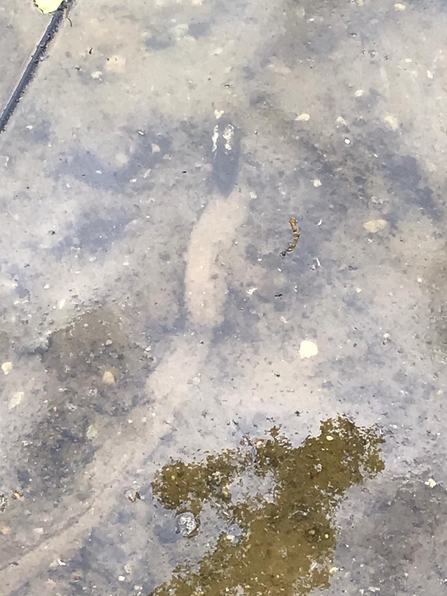
Freshwater mussel - Andrew Hickinbotham
Spiders enjoy a sea of sheep's sorrel
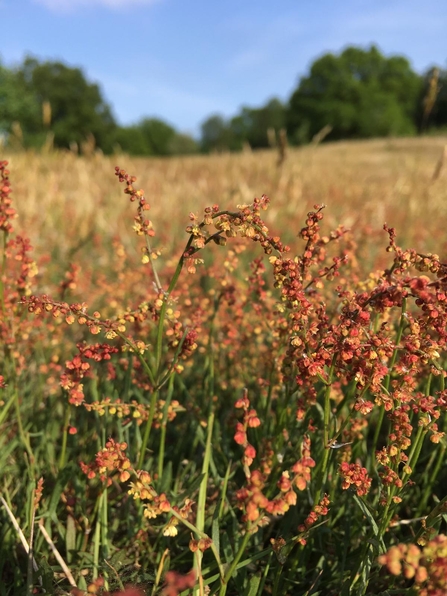
Sheep's sorrel, Blaxhall Common - Ben Calvesbert
Our Meadows and Heaths Warden, Ben Calvesbert, reports that our heathland sites are already looking dry and crispy following a dry spring.
Have you noticed how many of our ‘acid grassland’ sites have a red tinge to them? This is thanks the presence of sheep’s sorrel (Rumex acetosella). The seeds are eaten by birds, and rabbits and deer are partial to the leaves. This photo was taken at Blaxhall Common, where the grass was full of spiders and grasshoppers.
Southern marsh orchid at Snape
Andrew Excell, our South East Suffolk Sites Manager, has enjoyed the sight of southern marsh orchids growing in the grasslands at Snape Marshes this week as well as the joyful (and, sadly, increasingly rare) song of nightingale as well as the explosive voice of Cetti’s warblers
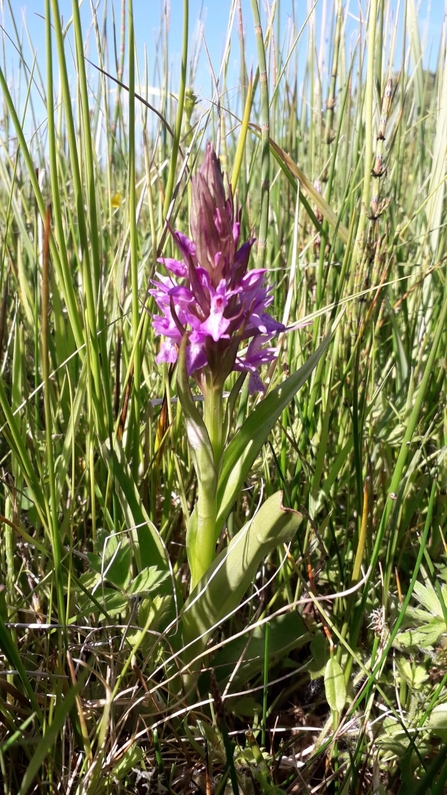
Southern marsh orchid - Andrew Excell
The video clip below features nightingale singing in scrub habitat and was filmed on the banks of the river Deben. Scrub is incredibly important for nightingales as well as a host of other species, including reptiles and insects. It's an undervalued successional habitat that is all too often regarded as ‘messy’ and easily lost by overzealous tidying.
Steve Hook, our South East Suffolk Warden, reports hearing sedge and garden warblers, a blackcap and a nightingale at Newbourne Springs reserve. Apparently, a visitor reported hearing the gentle purr of a turtle dove too, but Steve is yet to witness this himself. Hopefully he’ll keep us all posted! Turtle dove numbers have plummeted over recent decades, the availability of seeds and scrub habitat is vital for them and many of our nature reserves are able to offer the mix of habitat they need.
Nightingale calling on the Deben (https://youtu.be/WX592gUcDcg)
Nightingale calling on the Deben
Skylarks fledge
They grow up fast, our first skylarks fledge! Juveniles are distinctive by the pale fringes of feathers to the upper parts of their body, and white tips of the crown weathers. This one still looks a bit fluffy and not a slick as a breading adult.
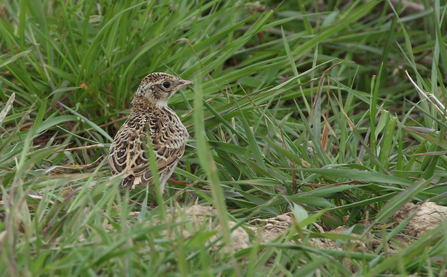
Skylark chick - Andrew Easton









